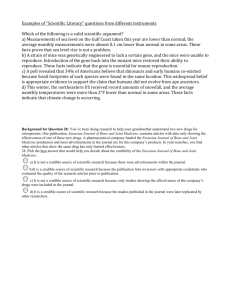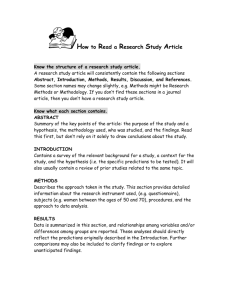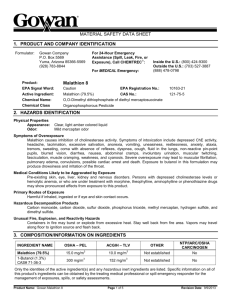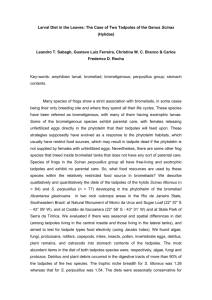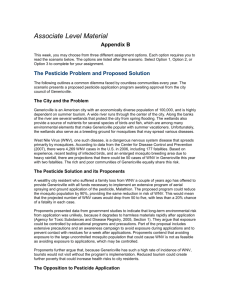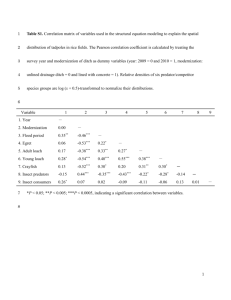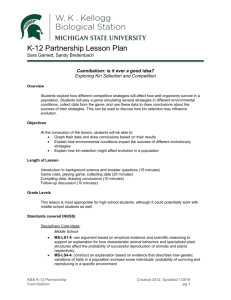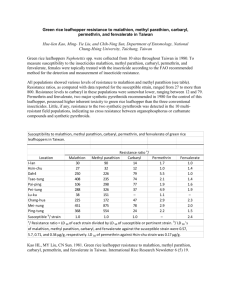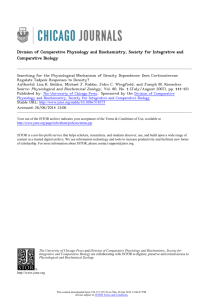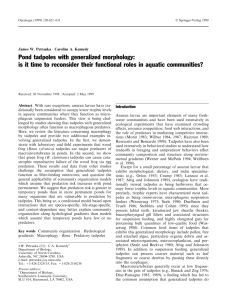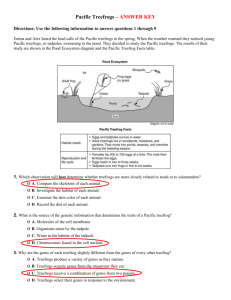DOC
advertisement
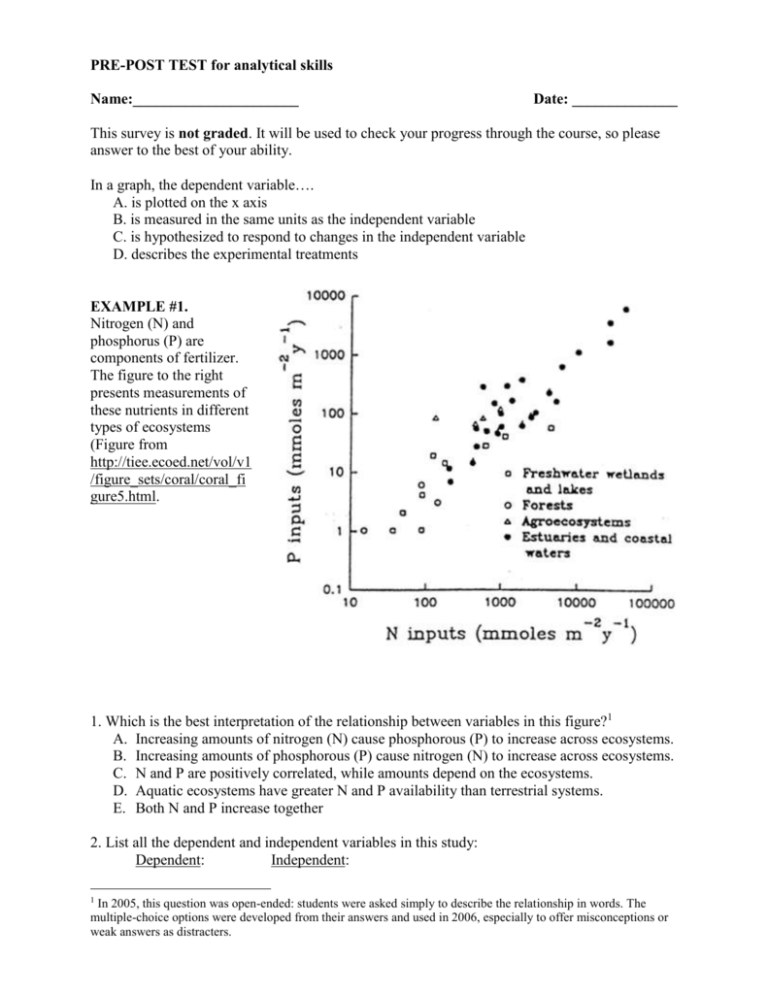
PRE-POST TEST for analytical skills Name:______________________ Date: ______________ This survey is not graded. It will be used to check your progress through the course, so please answer to the best of your ability. In a graph, the dependent variable…. A. is plotted on the x axis B. is measured in the same units as the independent variable C. is hypothesized to respond to changes in the independent variable D. describes the experimental treatments EXAMPLE #1. Nitrogen (N) and phosphorus (P) are components of fertilizer. The figure to the right presents measurements of these nutrients in different types of ecosystems (Figure from http://tiee.ecoed.net/vol/v1 /figure_sets/coral/coral_fi gure5.html. 1. Which is the best interpretation of the relationship between variables in this figure?1 A. Increasing amounts of nitrogen (N) cause phosphorous (P) to increase across ecosystems. B. Increasing amounts of phosphorous (P) cause nitrogen (N) to increase across ecosystems. C. N and P are positively correlated, while amounts depend on the ecosystems. D. Aquatic ecosystems have greater N and P availability than terrestrial systems. E. Both N and P increase together 2. List all the dependent and independent variables in this study: Dependent: Independent: 1 In 2005, this question was open-ended: students were asked simply to describe the relationship in words. The multiple-choice options were developed from their answers and used in 2006, especially to offer misconceptions or weak answers as distracters. EXAMPLE #2 Amphibians (frogs and salamanders) are declining worldwide. Two hypotheses for why this is happening are 1) pesticides and 2) predators. To test these hypotheses, Reylea et al (2005) raised several frog species as tadpoles in small ponds. Some ponds had no predators, some had newts, and some had beetles. In addition to these treatments, ponds were exposed either to the insecticide Malathion, the herbicide Roundup, or no pesticide at all. This created nine different treatments: No predator Newts Roundup Malathion No pesticide Beetles Roundup Malathion No pesticide Newts Roundup Malathion No pesticide No predator Beetles Figure 2. Total survival of tadpoles living in experimental ponds with different pesticides and predators present. Data are means ± SE. Excerpted from Relyea at al. 2005, Ecol. Appl. 15: 1125-1134. 3. Which treatment would you consider the “control”? 4. Which treatment appears to have had the greatest impact on tadpole survival? Explain. 5. Did both predators have the same effect on tadpoles? Explain. 6. Did both pesticides have the same effect on tadpoles? Explain. 7. Suppose you are managing a population of highly endangered frogs. Based on these results, would you want to ban pesticides tested in this experiment? Explain your answer. EXAMPLE #3. A species of the tiny crustacean Daphnia lives only in deep lakes. You propose that their food limits this species to deep lakes, and you want to test that hypothesis. You feed Daphnia food from deep lakes where it normally lives and feed them food from shallow lakes and compare how well they grow and reproduce in each treatment. Replicate 1 2 3 4 # Eggs per female . Deep lake food Shallow lake food 25 14 19 11 21 16 28 10 8. Draw a graph on the axes at the right that best summarizes the data that this experiment produced. 9. Is your hypothesis supported or rejected from this experiment? Explain your answer. EXAMPLE #4. Rhododendron bushes are often found on acidic soils (acidic means lower pH). One hypothesis to explain this is that rhododendrons cause the soil to become more acidic. A second hypothesis is that rhododendrons grow better in acidic soils. To test this second hypothesis, we prepared pots of soil with a range of acidity between 4 and 6.5, and then measured the growth of planted rhododendrons. Suppose the data look like this: Plant weight (g) 82 69 74 87 75 Soil pH 4.5 6.5 5 4 5.5 10. Draw a graph on the axes at the right that best summarizes the data that this experiment produced. 11. In words, explain any pattern in the graph that you created. (Is there a relationship between pH and plant weight?) 12. Do these results support or reject the second hypothesis? Explain. 13. In general, how would you rate your level of anxiety and frustration when you are presented with graph data to analyze or interpret? A. No anxiety or frustration B. Mild C. Moderate D. High anxiety or frustration E. Extreme anxiety and frustration




